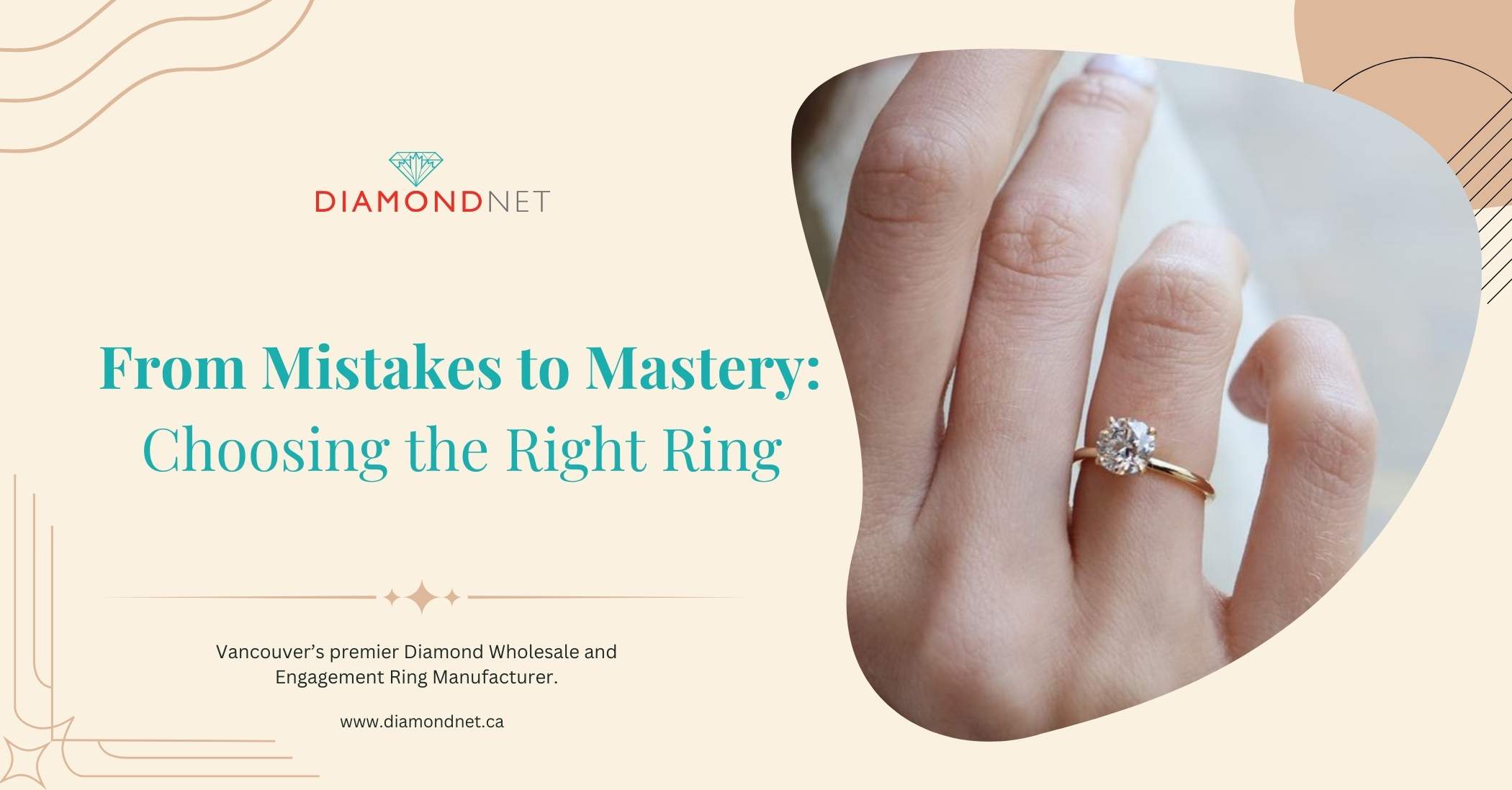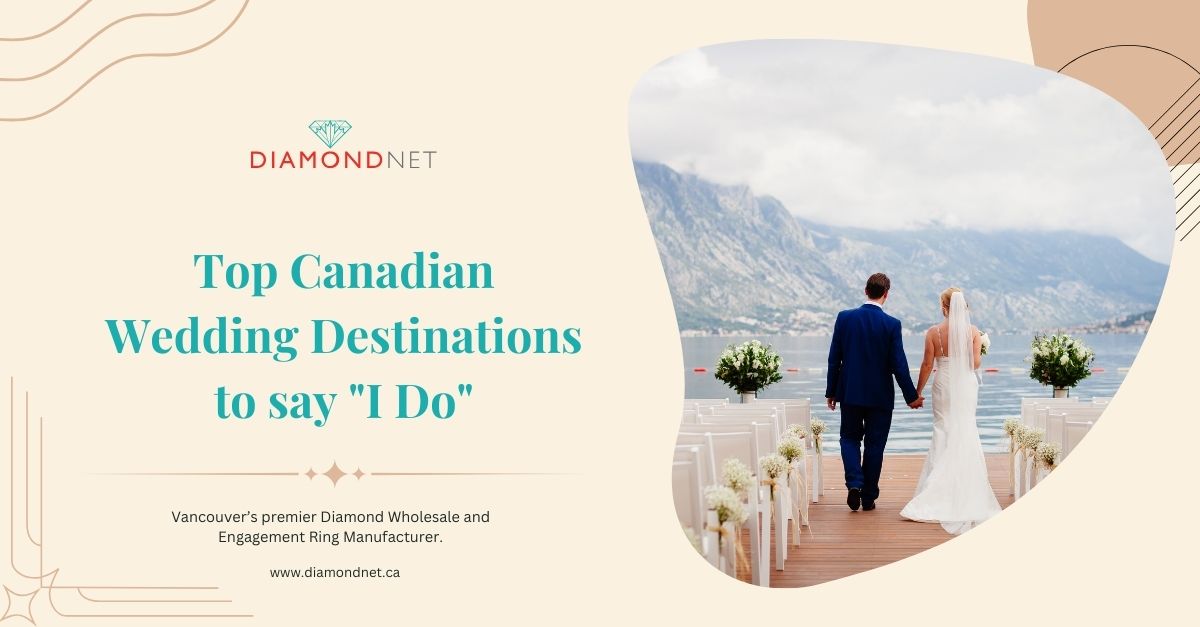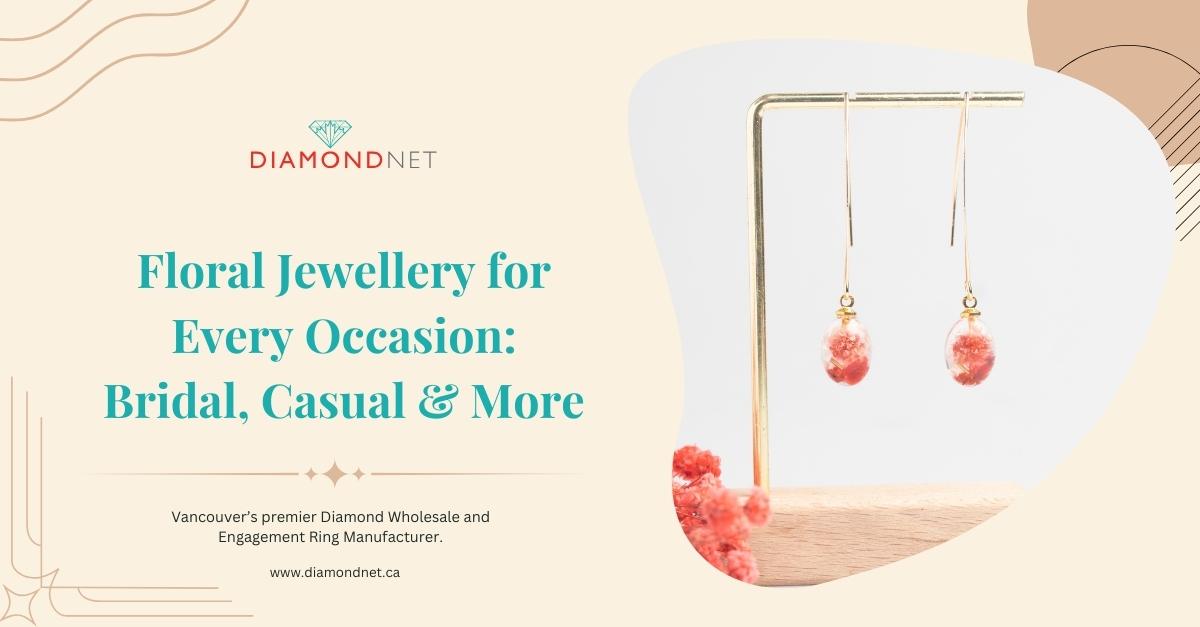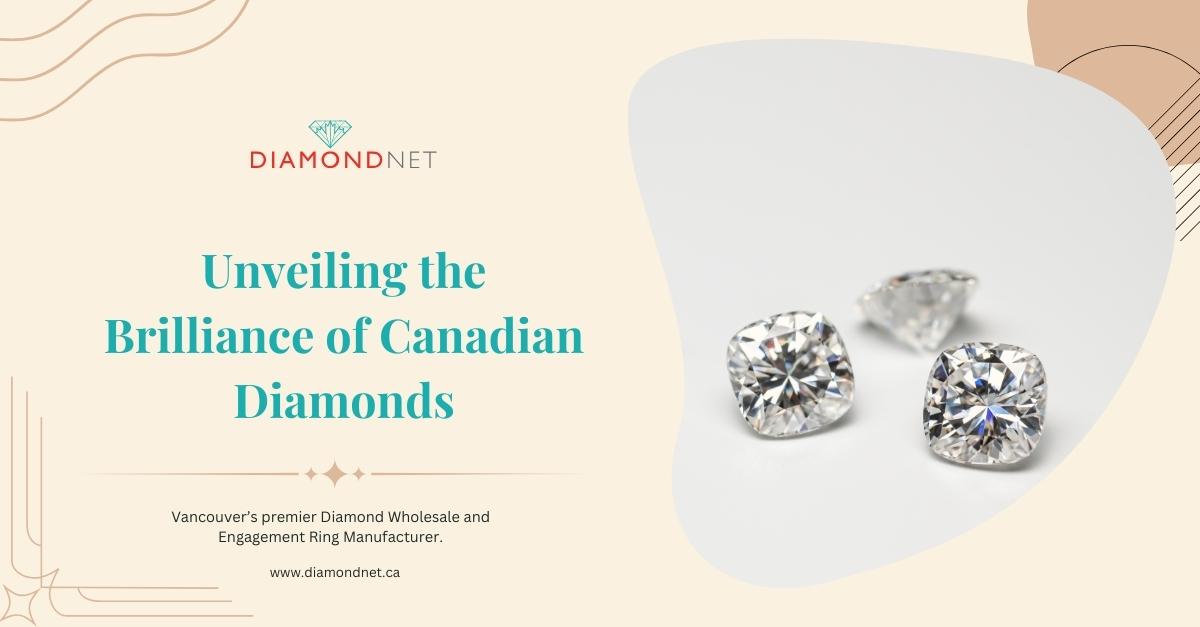Shopping for an engagement ring can feel overwhelming, especially for first-time buyers. With so many styles—solitaire, halo, and pave—and diamond shapes like round, princess, and oval, the choices can quickly become daunting.
Whether you’re looking for a custom engagement ring or a pre-made design, making an informed decision is key. Your ring should align with your style, budget, and values.
This guide will help you avoid common engagement ring shopping mistakes. You’ll get practical advice on choosing the perfect ring, understanding the 4Cs of diamonds, and selecting ethically sourced options from trusted Vancouver jewellers like DiamondNet.
Understanding the 4Cs: A Practical Guide to Diamond Quality
When shopping for an engagement ring, understanding the 4Cs of diamonds—Cut, Colour, Clarity, and Carat—is essential. These factors determine a diamond’s brilliance, value, and overall appeal.
Here’s a simple breakdown to help you make an informed choice and avoid common diamond shopping mistakes.
Cut
A diamond’s cut affects how well it reflects light, creating sparkle. A well-cut diamond—such as a round or oval shape—maximizes brilliance, while a poorly cut diamond can appear dull, even if it has high clarity and carat weight.
Colour
Diamonds range in colour, with the most valuable being near colourless (D-F). Lower grades (G-J) may have a slight yellow tint, which can affect how the diamond looks in different settings. Choosing the right colour depends on personal preference and the ring’s metal type.
Clarity
Clarity measures the number of imperfections (inclusions) within a diamond. While flawless diamonds are rare and expensive, most inclusions are microscopic and invisible to the naked eye. A VS1 or VS2 clarity diamond strikes a perfect balance between quality and price.
Carat
Carat weight determines a diamond’s size, but bigger isn’t always better. A well-cut, smaller diamond can outshine a larger, lower-quality one. Prioritizing cut and clarity over size ensures the best visual impact within your budget.
Budget Planning for Your Perfect Engagement Ring: Quality Without Compromise
Buying an engagement ring is an exciting step, but setting a realistic budget ensures you get the best value without overspending. Here’s how to balance quality and affordability while making a confident choice.
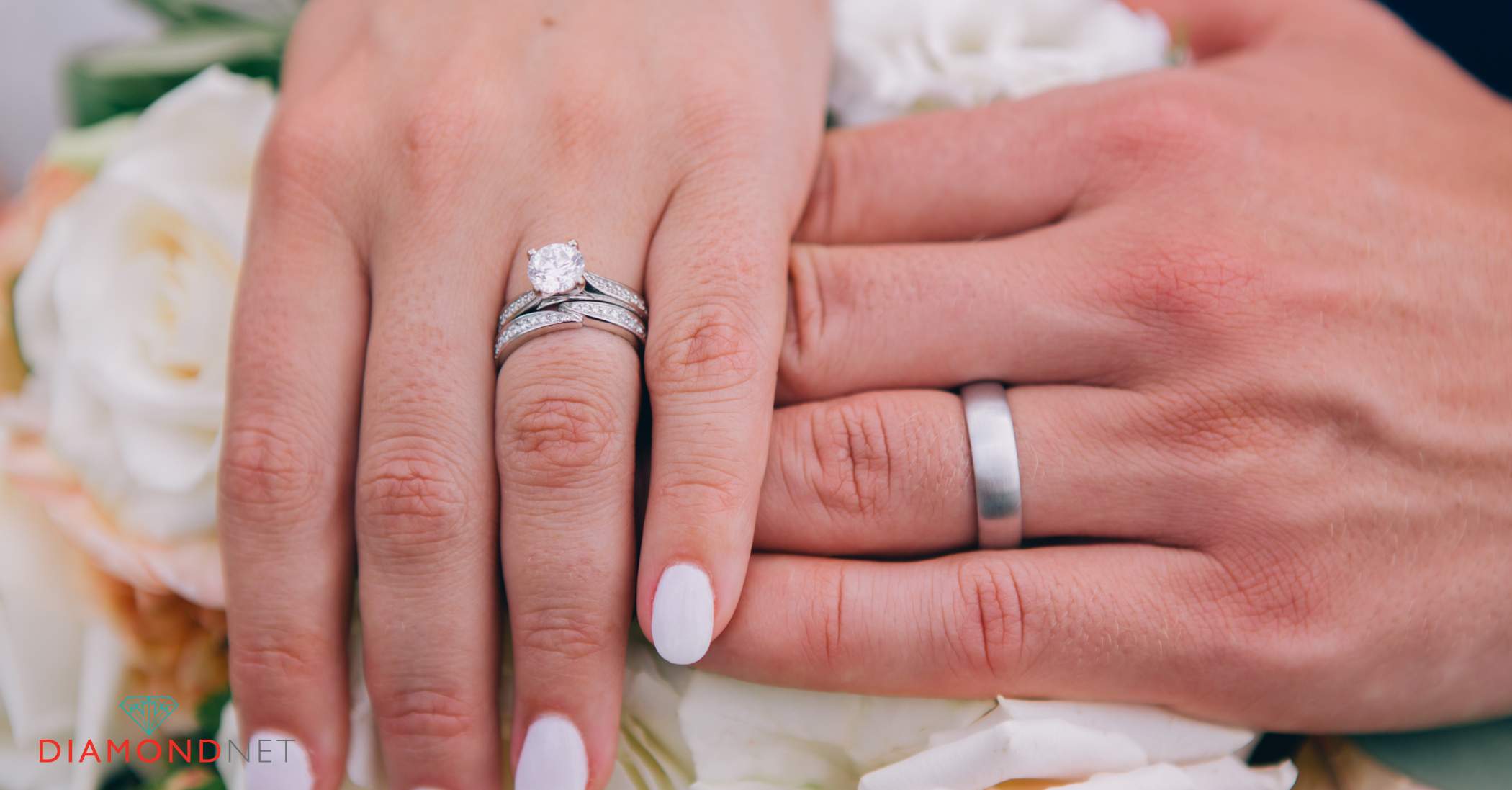
How do I avoid overspending on an engagement ring?
Overspending often happens when buyers focus on size over quality or fall for unnecessary upgrades. Here’s how to stay within budget without sacrificing beauty.
Set a Realistic Budget
Determine what you can comfortably afford rather than following outdated rules like spending two to three months’ salary. Engagement rings come in a wide range of styles and price points, so there’s no one-size-fits-all approach.
Prioritize Cut and Clarity
A well-cut diamond will appear larger and more brilliant, even if it’s slightly smaller in carat weight. Instead of chasing size, invest in cut and clarity for maximum sparkle.
Choose Budget-Friendly Diamond Shapes
Some shapes offer better value than others. Oval, pear, and princess-cut diamonds can be more affordable than round diamonds while maintaining a stunning look.
Consider Cost-Effective Ring Settings
Settings significantly impact the overall price. Solitaire and halo settings tend to be more affordable than intricate pave or vintage designs while still offering elegance and durability.
Finding a Trusted Jeweller: Certifications, Reviews, and Ethical Sourcing
Choosing the right jeweller is just as important as selecting the perfect ring. A trusted jeweller ensures quality, transparency, and ethical sourcing—key factors in making an informed purchase.
How to Ensure a Diamond is Ethically Sourced
Ethically sourced diamonds are mined or created under fair labour practices and sustainable conditions. To verify ethical sourcing, look for:
- Kimberley Process Certification – Guarantees that diamonds are conflict-free.
- Lab-Grown Diamonds – A sustainable, ethical alternative to mined diamonds.
Key Factors to Evaluate When Choosing a Jeweller
When deciding where to buy an engagement ring, consider these essential factors:
- Certifications: Ensure the jeweller offers GIA or AGS certification, confirming a diamond’s quality and authenticity.
- Reviews & Reputation: Check customer testimonials and online ratings to gauge reliability, service quality, and transparency.
- Ethical Practices: Ask about their commitment to sustainable sourcing. Reputable jewellers proudly share details about their ethically sourced diamonds.
Perfect Pairing: Finding the Ideal Setting for Your Diamond
The right engagement ring setting does more than hold the diamond—it enhances brilliance, ensures durability, and reflects your personal style.
Durability Meets Design
Your setting should match both aesthetic preferences and lifestyle needs.
- Prong settings maximize sparkle but may snag on clothing.
- Bezel settings offer sleek, modern protection, perfect for active lifestyles.
- Halo settings add extra sparkle and create a vintage-inspired look while also protecting the centre stone.
Best Engagement Ring Settings for Different Diamond Shapes
Each diamond shape pairs best with certain settings:
- Round diamonds – Versatile, they complement solitaires and pave bands beautifully.
- Princess cuts – Best suited for clean-lined settings like channel or tension styles.
- Oval & emerald cuts – Their elongated shape stands out in three-stone or solitaire settings.
For a one-of-a-kind design, consider custom jewellery services to create a setting tailored to your vision.
Getting the Perfect Fit: Tips for Ring Sizing and Comfort
Finding the right engagement ring size is essential for comfort and long-term wearability. A properly fitted ring should feel secure yet comfortable—not too tight or too loose.
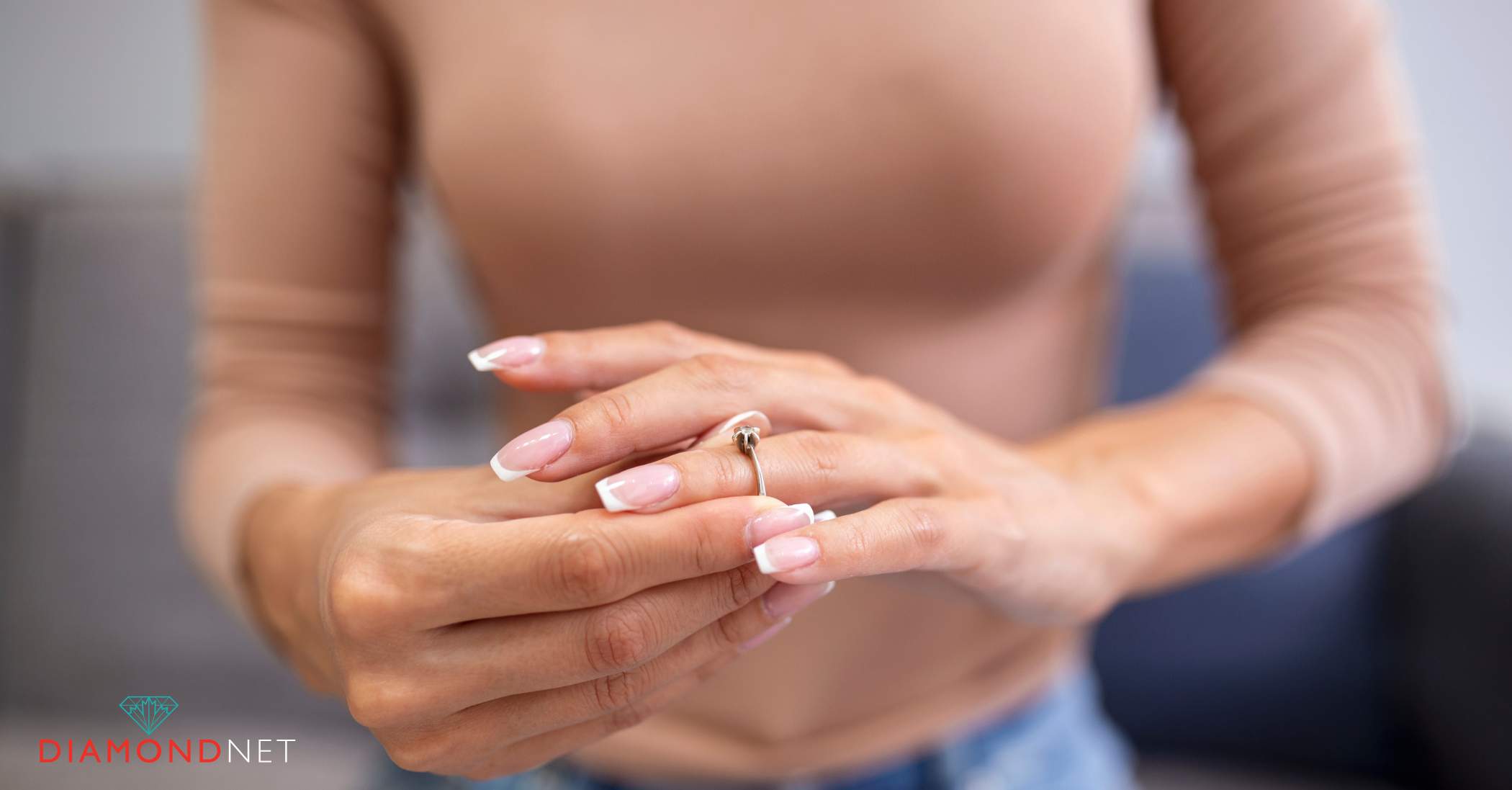
How to Find the Right Ring Size
Here are a few key tips to ensure the perfect fit:
- Get Professionally Measured – A trusted jeweller can size your finger accurately using specialized tools.
- Consider Lifestyle & Weather – Finger size fluctuates due to temperature changes and daily activities. A slightly looser fit may be ideal for warmer climates.
- Opt for Comfort-Fit Bands – Rings with rounded edges reduce friction, making them more comfortable for all-day wear.
Should you buy a custom or pre-made engagement ring?
Deciding between a custom engagement ring and a pre-made design depends on your budget, timeline, and personal preferences. Here’s a quick breakdown to help you choose:
Custom Engagement Rings
✔ Pros:
- Fully personalized – Ideal for creating a unique, one-of-a-kind ring.
- Allows you to handpick every detail, from the diamond to the setting.
✘ Cons:
- Longer wait time – Custom designs require more time for design and production.
- Higher cost – Customization often comes with a premium price tag.
Pre-Made Rings
✔ Pros:
- Ready to wear – No waiting period; perfect for last-minute proposals.
- More affordable – Often costs less than a custom ring.
- Still customizable – Can be resized or engraved for a personal touch.
✘ Cons:
- Less unique – You may find similar designs elsewhere.
If you value personalization and exclusivity, a custom engagement ring is the way to go. If you prefer convenience and affordability, a pre-made ring is a great choice.
What are the most common mistakes when buying an engagement ring?
Avoiding common engagement ring shopping mistakes can help you make a smart, confident purchase without regrets. Here are key pitfalls to watch out for:
- Not Setting a Clear Budget – Without a plan, it’s easy to overspend or compromise on quality. Decide on a comfortable budget before shopping.
- Ignoring Certifications – A diamond’s quality should be GIA or AGS certified to ensure authenticity and value. Avoid uncertified stones, as their grading may be unreliable.
- Overlooking Ethical Sourcing – Ensure your diamond is conflict-free by choosing ethically sourced diamonds or lab-grown alternatives. Look for Kimberley Process certification.
- Choosing the Wrong Ring Size – Getting the correct fit is crucial for comfort and security. Get professionally measured to avoid resizing issues later.
- Falling for Marketing Gimmicks – Retailers may push “limited-time discounts” or unnecessary upgrades. Focus on quality, not flashy promotions.
- Neglecting Maintenance Costs – Engagement rings require upkeep (cleaning, prong checks, potential resizing). Factor in long-term care costs when budgeting.
By avoiding these common mistakes, you can confidently select a high-quality, ethically sourced engagement ring that fits your budget and style.
Conclusion
Shopping for an engagement ring doesn’t have to be overwhelming. By avoiding common engagement ring shopping mistakes, you can make a confident and informed decision.
Focusing on the 4Cs, setting a realistic budget, and choosing a trusted jeweller will help you find a ring that is both meaningful and affordable. Whether you prefer a custom engagement ring or a pre-made design, the most important thing is that it reflects your love and personal style.
If you’re in Vancouver, visit DiamondNet for expert guidance and a personalized consultation to help you find the perfect ring.
